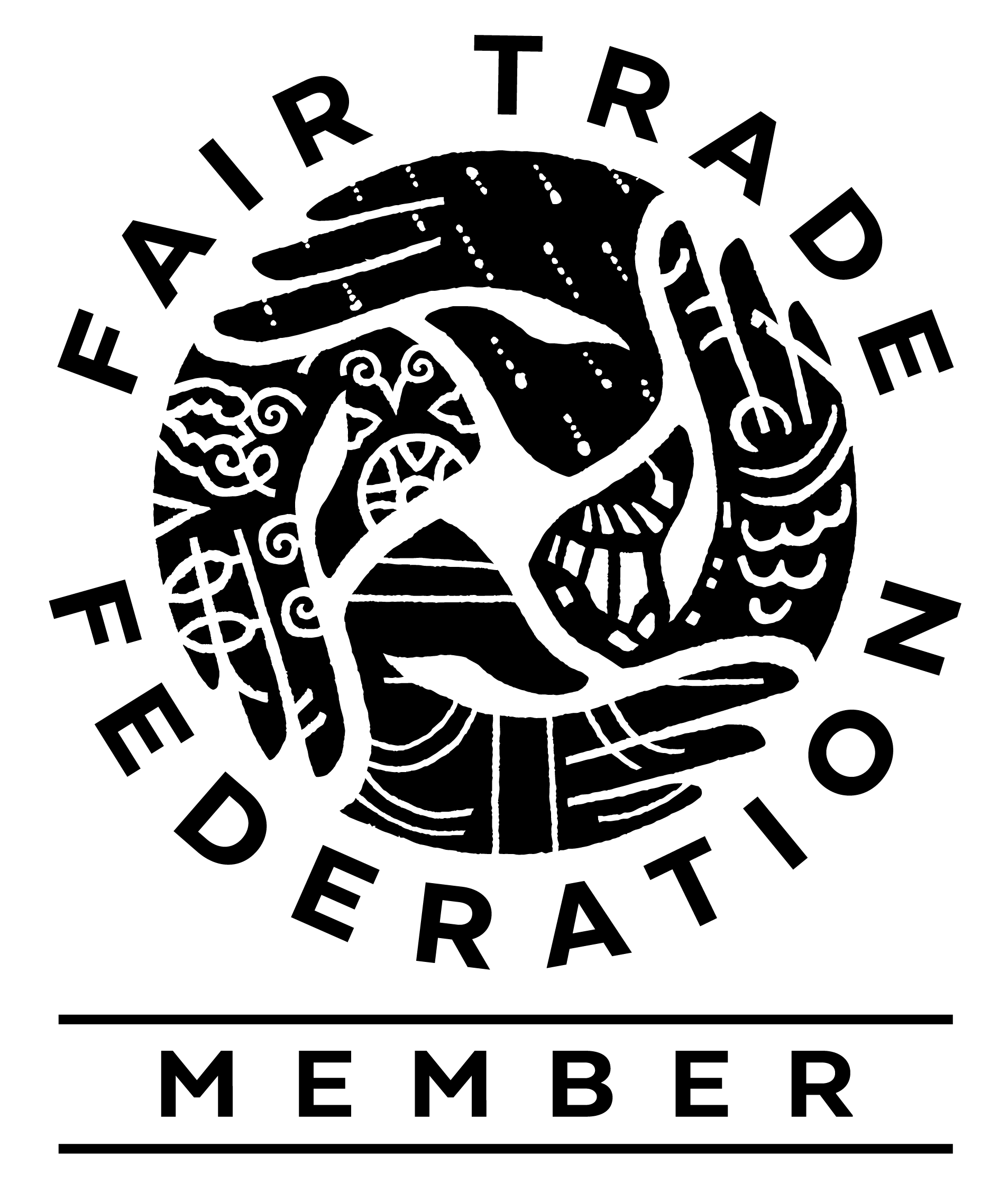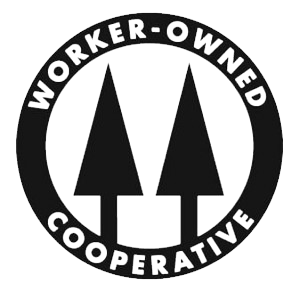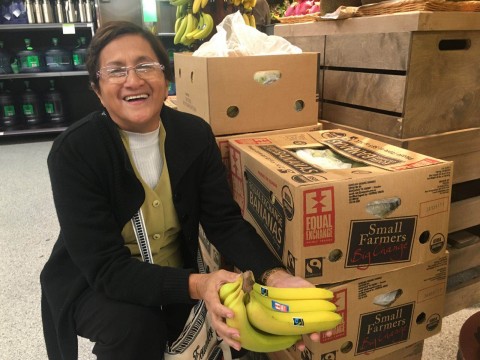
We’re proud to work with Fortaleza del Valle, a 935-member cacao co-op in Calceta, Manabí, Ecuador. We use their distinctive and delicious cacao in our Organic Ecuador Dark Chocolate and our Organic Extreme Dark Chocolate! Read on to find out more about the co-op, our partnership and the farmers who grow the cacao.
Fortaleza del Valle is one of few Fair Trade and Organic certified cacao producer organizations in Ecuador. They place a strong focus on offering a quality product to their customers, and the emphasis on quality starts with the genetics of the trees. Ecuador produces 70% of the world’s cacao designated as “fine and with aroma,” and Fortaleza will only purchase from members who grow the Nacional Arriba variety that falls under this designation. In 2012, we began working with the organization and co-financed a laboratory that allows the staff there to make small batches of chocolate. We also helped them to form a tasting panel that has tasted more than 200 samples to date! This allows Fortaleza to evaluate their product in the way their buyers do, to improve their post-harvest processing, and to recognize the true value of their product. From 2012 to 2014, they were able to increase their quality premiums from $800 per metric ton above market price to $1,150. In 2016, they plan to produce chocolate bars for sale on the national market.
The partnership between Equal Exchange and Fortaleza del Valle over the 3 years of the USAID Co-operative Development Program (CDP) allowed the two organizations to develop a much closer working connection than before.
Fortaleza del Valle is also the first cacao producer organization in Ecuador to have implemented a member savings program, akin to the patronage program that Equal Exchange’s worker-owners participate in. With the help of co-op experts in the US and Ecuador, our USAID CDP project introduced the concepts of member equity to gain member loyalty and capital to help support the growth of their organization. Farmers understood quickly that this savings approach was not just about themselves but about their whole family and their greater community. Right now they save $0.75 per kilo of cacao delivered in their name in an account at FDV
“One of my personal favorite outcomes of our collaboration in quality is the change in fermentation protocol at the Quiroga post-harvest processing center. The Calceta center is the primary post-harvest center for FDV, and Quiroga is secondary. They were using the same protocols for both, with 4 days of fermentation. We visited Quiroga and noted that the
elevation and climate varied significantly from Calceta, and the delivery of beans in some cases is a multi-day process via boats. Through tasting samples in the lab and some experimental trials, the team there established that the quality of the beans from Quiroga would benefit significantly from an additional day of fermentation. After making this change to
the processing, the quality of the beans from Quiroga did improve significantly.”
“L upita” and her family manage a 4 hectare farm with just over 3,000 cacao plants. They also harvest banana, orange, lemon, and sapote. They have installed an irrigation system which has helped to increase the productivity of the plants. In addition, they have chickens and a tilapia pond. Lupita’s farm mainly features Ecuador’s well-known Nacional Arriba cacao, famed for its fine flavor and floral aromas. Lupita has also served many years on the Board of Directors of the organization.
upita” and her family manage a 4 hectare farm with just over 3,000 cacao plants. They also harvest banana, orange, lemon, and sapote. They have installed an irrigation system which has helped to increase the productivity of the plants. In addition, they have chickens and a tilapia pond. Lupita’s farm mainly features Ecuador’s well-known Nacional Arriba cacao, famed for its fine flavor and floral aromas. Lupita has also served many years on the Board of Directors of the organization.
.
.
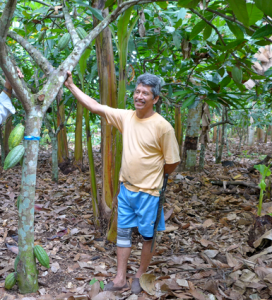
Don Cruz is a member of the FDV Oversight Committee at Fortaleza. He was also selected to participate in the Model Farm Program as part of our USAID CDP project. Don Cruz has three hectares of cacao. He mainly works the farm by himself but sometimes his son also helps out. In 2012, he harvested 29 quintals of cacao and through participation in the Model Farm program he increased to 38 quintals per hectare. In addition to the cacao, Don Cruz also grows mandarin, banana and coffee, and raises chickens.
Want to experience Ecuadorian chocolate? Try our Organic Ecuador Dark Chocolate and our Organic Extreme Dark Chocolate!
Watch the video below to get the tips, or scroll down for a full explanation!
Here are the brewing mistakes we’ve identified — and advice that will help you do better!
Mistake #1: Don’t store coffee in the fridge or freezer! When you store coffee in the fridge or freezer, the grounds can absorb moisture and odors from that space, which will negatively affect the taste of your coffee. Instead, store coffee in a cool, dry place in an airtight container.
Mistake #2: Don’t over- or under-heat your water! Sometimes your coffee will taste off just because it was brewed with water that was too hot, or not hot enough. The ideal temperature is between 195F and 205F. Unfortunately, many home brewers just aren’t strong enough to heat water to the proper temperature for a good cup of coffee, so it’s worth investing in a high quality machine if that’s your preferred method.
Mistake #3: Don’t use a blade grinder or spice grinder! If you’re grinding your beans at home, use a burr grinder. Blade and spice grinders will chop your beans unevenly, leading to a poor extraction that will make your coffee taste off. A burr grinder crushes your beans in a way that gives you a uniform grind, an even extraction, and a better cup.
Mistake #4: Don’t use a dirty grinder! Stale grounds and oils can build up in your grinder and affect the taste of your fresh beans, so it’s important your grinder clean. You can use a commercial product, or grind a scoop of uncooked white rice to clean out old grounds and absorb oils.
Mistake #5: Don’t use the wrong grind for your brew method! Using the wrong grind size for your brewer can lead to weak or bitter coffee, so make sure you know and use the proper grind for your method. Coarse-grind coffee (French press) should resemble kosher or sea salt in texture, medium-grind coffee (drip brewer) should be similar to granulated sugar and fine-grind coffee (home espresso maker) should resemble confectioner’s sugar.
Mistake #6: Don’t use a dirty brewer! Minerals and scale can build up in your brewer, negatively affect the taste of your coffee, so make sure to keep it clean. You can use a commercial cleaning product, or run a cycle of 50/50 white vinegar and water mixture through your brewer to clean it out. Just make sure to run a cycle of plain water through the brewer after that, before you start brewing coffee again.
Mistake #7: Don’t use bad-tasting, unfiltered or distilled water! When it comes to the taste of coffee, the water you use plays a huge role. If you wouldn’t enjoy drinking it from the tap, don’t brew coffee with it. We recommend brewing with filtered tap or bottled water.
Mistake #8: Don’t use an inconsistent or unmeasured amount of coffee! Using too much or too little coffee can drastically affect the taste of your cup, so it’s important to properly measure your grounds. We recommend a 17:1 water-to-coffee ratio, but you can also weigh your coffee according to the specifications of your brew method. From there, you can adjust to taste: if your coffee tastes too strong or bitter, use less coffee, and if it tastes weak or grassy, use more coffee.
Keep these tips in mind to make the most out of your fairly traded coffee whenever you brew at home!
In January, fellow Equal Exchange co-owner Laurie Foote and I were on a plane bound for Nicaragua. We were part of an Equal Exchange/Presbyterian Hunger Program Delegation, a special immersion experience focused on Fair Trade and the journey of coffee, starting at its origin. Once in Nicaragua, we would meet 11 people from congregations all over the country — some who sell and serve Equal Exchange products after church services, some who work with PCUSA, and some who were just interested in learning more about Fair Trade and coffee.
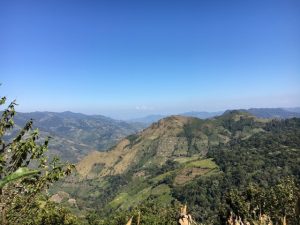
Equal Exchange and the Presbyterian Hunger Program have led more than 10 educational delegations to Nicaragua over the course of the 16-year partnership with the Presbyterian Church USA. The highlight of this trip was a two-night homestay visit to San Jeronimo, a primary coffee cooperative in Canto Gallo, Nicaragua.
In late January, many of the coffee cherries were ready for harvesting, so we were able to work alongside our farmer hosts, picking the bright red fruit from the trees and learning about planting, composting, and de-pulping. We learned from the cooperative president, Antonia Munzon, that their coffee plants had been severely affected by la roya, the coffee leaf rust fungus, but that they had been busy replanting new trees and nourishing their plants with organic compost that they were proud to show us. She told us, “We’ve been working hard… be ready for our harvest in a few years!”
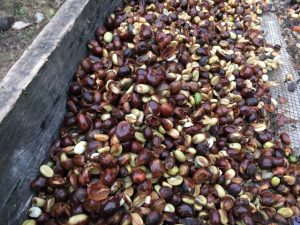
After visiting the farms we stopped at PRODECOOP, the secondary level cooperative partner of Equal Exchange, where we learned about the next steps of coffee production. Beans are sun-dried on large patios then samples are roasted and cupped by professional tasters. The dried beans are stored in the warehouse in green bags to show they are organic, and some of those very beans would be bound for Equal Exchange’s roastery!
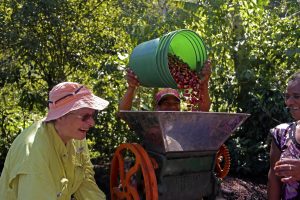
Additional learning opportunities in the realms of economic and social justice included presentations on Fair Trade vs. free trade, witnessing culture and community building programs at Batahola Norte community center in Managua, and a visit to a Fair Trade artisan craft organization, Esperanza en Accion (Hope in Action).
We also visited historical sites and learned about Nicaraguan history and the United States’ role in shaping the political landscape in the 1980’s (which had a direct connection to Equal Exchange’s very first coffee import). We also had the unique chance to visit two farmers whose farms had benefited from the year-round irrigation provided by a water capture system project, funded in part by the Presbyterian Hunger Program’s Small Farmer Fund.
It was a powerful delegation that elicited a range of emotions from everyone. The appreciation that I gained for each individual coffee bean and the gratitude I left with for the hands that do the work to bring us a delicious cup of coffee is indescribable, but immense and real.
Some of the delegation participants offer their reflections on the trip below:
A Cup
by Judy Brown, Grace Presbyterian, Midland, TX
A cup.
A cup offered to you, to me, to us, and, from us, to others.
A cup of welcome.
A cup of invitation,
An invitation to share, to visit, to stay.
A stepping stone to a friendship, to a support system, to what matters.
A conduit for compassion, for consolation, for voicing concerns, for laughter, for sharing joy
In community.
What do you put in your cup?
Coffee, tea, water, milk, sugar, sweetener, honey?
Or sweat, hopes, dreams, determination and frustrations?
A cup.
So easy for us to fill to overflowing
At the expense of those we do not see.
It can be a cup…of salvation.
Much like what God offers to all, to us, to you, to me.
A cup filled with love, intentionality, respect, conscientiousness, and empowerment.
A cup–
Filled to the brim with such grace, can make a difference,
To a child, to a family, to a community.
Come join me;
A cup is waiting for you.
Video by Rev. Peggy McDonald, Presbytery of Whitewater Valley, Presbyterian Church USA

Upon returning home, Jenni Heimach, of Irvington Presbyterian Church, Indianapolis, IN gave a presentation about her trip to her congregation. Jenni sells Fair Trade products after service using this fantastic home-made cabinet!
For information on similar delegation opportunities, including a trip to Nicaragua May 13-20th with the Unitarian Universalist College of Social Justice visit: http://uucsj.org/journeys/
For information on trips with the Presbyterian Hunger Program contact Jessica.Maudlin@pcusa.org
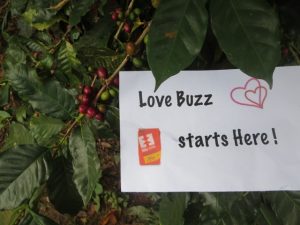
Photos courtesy of Kimberly Rousseau, Craig Brown and Jillian Robinson.
Last October we welcomed organic banana farmer Mariana Cobos to the Twin Cities to celebrate our 10 year anniversary importing bananas from AsoGuabo Cooperative in Ecuador.
“I would like to express my gratitude for the opportunity to tell my story about the true history of small-scale banana farmers,” Mariana said during the visit. That story is filled with the difficulties, the challenges, and the inequity that small-scale farmers face.

One of the peculiarities of organic bananas is that they can only be produced in a handful of countries in Latin America. Ecuador and northern Peru are the most favorable locations to produce organic bananas. With rising demand for organic bananas in the U.S., the new market opportunities for small-scale banana producers are promising. At the same time, the challenges are enormous: competition over land is rising, new plantations are emerging, multinationals are moving from Central America to South America, and the history of conventional bananas is primed to repeat itself with organic bananas.
Organizing into co-ops allows farmers to face these difficulties together, but organizing 133 small-scale banana farmers comes with challenges as well. The biggest hurdle that small-scale farmers face is the dysfunction of the system they are living in. The poverty level is considerable, basic needs are unmet, and social and economic problems are features of the daily routine. Low yield and high production costs prevent farmers from obtaining a decent income. If farmers are focused on surviving on a day-to-day basis, then the long-term benefits of being part of a cooperative can be a far-fetched concept.
In spite of these circumstances, some local leaders have faith in this larger dynamic of cooperation. These local leaders are training farmers on organizing and fostering partnerships with local or national organizations in order to be stronger as a whole, as opposed to individually. Slowly but surely, a small percentage of farmers are beginning to engage in this process.
In spite of having the optimal climate and soil to produce the ideal product, small-scale organic banana producers cannot be competitive in the banana industry if working alone. The supply chain is complex and working with bananas necessitates volume. Post-harvest practices and management of the supply chain require considerable investment and knowledge. The way independent, small-scale producers have tried to surpass these challenges is by organizing among themselves and creating economies of scale.
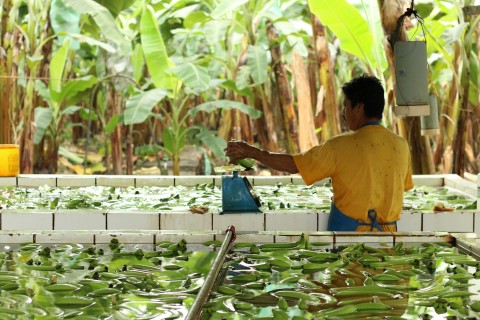
Since working with bananas necessitates volume, one motivation for small-scale farmers to organize is to aggregate volume in order to stay competitive. One hectare (2.5 acres) of small-scale organic banana production produces 1,040 40-lb. boxes annually, on average. As a contrast, one hectare on a highly technical and efficient organic plantation produces 2,500 40-lb. boxes annually, more than double the yield of a small-scale organic farm.
Now consider this: a single container of bananas contains 1,000 40-lb. boxes and the typical export volume is one container per week. This means at the current productivity level, the annual yield from a small-scale organic farm can only fill a single container of bananas.
Because of this reality, numerous small-scale farmers must combine their volume in order to fill a single container of bananas every week, 52 weeks of the year. This is the difference between buying an Equal Exchange banana that comes from more than 1,000 organized small-scale farmers and a banana that comes from a plantation with thousands of hectares and a single owner.
Organizing allows small-scale producers to have consistent weekly volumes, to have technical assistance that is more adoptable and adaptable, to develop new services and forms of employment in the community, to manage natural resources responsibly, and to support organizations and programs that strengthen their capacity.
Another incentive is the constant fight to improve one’s living condition as a farmer, to move beyond a subsistence level to a more stable form of living. The farmers fight for their rights: the right to organize, the right to their own natural resources, the right as an employee, the right to nutrition, the right to education, the right to become better men and women for society, the right to a decent house, the right to a decent life.
Once small-scale producers have this motivation and start to fight for their rights, then organizing makes sense. As a result of this, they start to understand how the market functions, the requirements of the market, and the necessary infrastructure, among other things. After being independent, small-scale farmers they become 133 small-scale farmers, organized in this case as AsoGuabo.
“A small-scale banana producer in Ecuador faces many problems,” Mariana said during the visit. “The most critical are lack of market power, lack of sales contracts, lack of established price, and lack of security in the sale of their product.” Independent, small-scale farmers going at it alone must sell their bananas through intermediaries who sell the fruit to large exporting companies. Producers, if not organized, are highly vulnerable to the deceptive practices of intermediaries, especially when negotiating price.
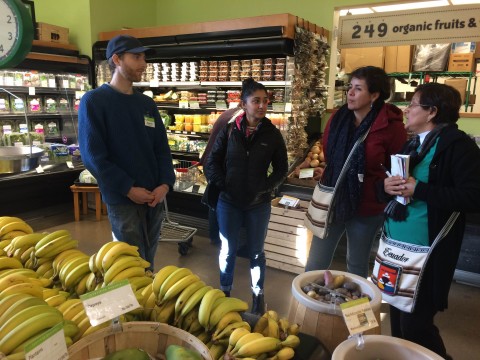
For example, in Ecuador, the national government has established an official price of six dollars per box of bananas, but this official price is not respected by the intermediaries. For independent, small-scale growers, it’s a buyer’s market. Intermediaries pay the price they want. The inability to receive a fair price is one of the main reasons that Mariana decided to join AsoGuabo. She faced many economic challenges to the point where she was willing to abandon her land because banana production was no longer profitable for her, an abandonment carried out by thousands of small producers every year.
In 2006, after learning the process of becoming a member, Mariana, along with 29 other producers from the community of La Libertad, decided to organize and become a part of AsoGuabo, so that they could share information, prices, sales strategies, and technical assistance with other organized communities. Mariana said that one of the most important motivations for her to be organized is the security in the sale of her bananas. The cooperative gives her an annual contract and she harvests every week to export to Equal Exchange. Another benefit is stability in prices. AsoGuabo also supports Mariana in quality training, productivity, export logistics, and above all, receiving a fair price that helps her family and her community.
Mariana has now been an AsoGuabo member for over 10 years. She said she is happy because she makes decisions together with her community, she is taking care of her plot of land, and she is teaching her son to farm organic and fair trade bananas.
The banana industry is one of the most developed in terms of productivity research, post-harvest management, logistics, and administration. But this development is in the hands of a few. The challenges for small-scale producers are exponentially greater – to compete in the conventional market, to stay informed on technological advancements, to understand and have access to market information, and to make informed decisions while having little power to negotiate.
The small-scale banana farmers in the South have advanced in their organizing, but American consumers in the North are still unorganized. As long as these two ends of the supply chain continue to remain largely unorganized, the players in the middle will continue to speak, decide, control, and act on behalf of both producers and consumers. This is exactly the work our banana team is engaged in every day, connecting farmers to consumers and giving both ends more power, knowledge, and ownership.
Chocolate is undeniably one of the most popular treats around, and one of the most widely available. But do you ever stop and think about where that chocolate comes from and how it’s made? While you may be used to choosing organic produce, you might not be familiar with the differences between organic chocolate and conventional chocolate. What’s really the difference? Let’s dive into some of the details of what makes our organic chocolate worth reaching for!
Behind every bar of chocolate are two key agricultural products: cacao and sugar. Conventional chocolate uses cacao and sugar can be grown with the aid of chemical fertilizers, pesticides, herbicides and more. These chemicals have been linked to numerous negative health effects, and most farmers lack the kind of protective gear that would help mitigate some risk of exposure. Organic chocolate, however, means that cacao and sugar are produced without the use of these harmful chemicals. Instead, farmers use biodynamic and organic fertilizers and pest deterrents. These natural agricultural products are better for both the crops and the farmers who grow them, allowing their work to thrive without putting their health and the health of their communities at risk.
The chemicals involved in the cacao and sugar production for conventional chocolate have a negative effect on the environment, too. Pesticides, fungicides and herbicides are designed to kill unwanted insects and plants, but usually end up eliminating important complementary species from farms, throwing off the delicate balance of local ecosystems. Chemicals leech into the soil and water, affecting plant and animal life even beyond the treated area. Organic chocolate is made from cacao and sugar that is grown without these synthetic chemicals, on farms that use natural, organic and biodynamic tools to cultivate these crops. Organic methods are good for biodiversity, ecosystems and the environment — and choosing organic chocolate means supporting these alternative means of production.
In choosing organic chocolate, you are choosing to eat a food that is made without synthetic pesticides, fertilizers, herbicides and other chemicals. While we may not think of chocolate as an agricultural product in the same way as the fruits and vegetables in the produce aisle, we can think of the benefits of organic production in a similar way. Why consume the added chemicals of conventional chocolate when you don’t have to? Enjoy the chocolate made from cacao and sugar grown with care by small farmers.
It’s important to make informed decisions about the products we buy, the things we eat and the systems we support. Choosing organic chocolate means giving your purchase power to a system that values your health, the health of farmers and the health of the environment. Now unwrap a bar and enjoy!
Shop for organic, fairly traded chocolate here!
Every year on Tuesday in Holy Week, the clergy of the Episcopal Diocese of California gather at Grace Cathedral to renew their ordination vows and receive newly blessed oils for healing and baptism. The oil they receive is the “Oil of Chrism,” a mixture of olive oil, cinnamon, cassia, calamus, and myrrh blended according to an ancient recipe prescribed in the book of Leviticus and prepared annually by the verger of Grace Cathedral, Charles Shipley. Priests receive two vials each year to be used in their congregations: Chrism for baptisms and Infirmorum for anointing the sick.
In March of 2016, when Mr. Shipley prepared the Oil of Chrism, one ingredient was different than usual. The olive oil in the mixture was organic and fairly traded, produced by small scale Palestinian farmer cooperatives in the West Bank. Please enjoy this video featuring Mr. Shipley preparing last year’s batch of Oil.
Equal Exchange olive oil is processed by the Palestinian Agricultural Relief Committee (PARC), a nonprofit organization that works with farmers and helps with overall technical assistance, water consultation and supply, storage facilities, quality control testing, and bottling. The organization also works with women and youth to promote viable and sustainable economic development.
Equal Exchange, together with the CRS Ethical Trade program, Episcopal Relief & Development, and other faith-based partners distribute the Palestinian oil in the U.S. PARC, Equal Exchange, and its other faith-based partner organizations are very committed to helping Palestinian farmers in the West Bank to make a living. One way that these farmers can make ends meet is through sales to individuals and churches around the world.
With Lent in full swing and Holy week around the corner, the Chrism Mass will soon be prepared and celebrated across several denominations including the Episcopalian Church, the Catholic Church and the Orthodox Churches.
Consider asking your Dioceses to include fairly traded, organic olive oil from the West Bank as part of the blend this year. The Chrism oil must be made with pure oil of olives. What’s more pure than olive oil made by workers in the Holy Land who are paid a fair price for their harvest? It adds the element of Justice to the Oil of Chrism.
Contributed by Peter Buck and Susan Sklar, Equal Exchange Interfaith Team
Women’s voices are a growing force within our supply chain, and we’re proud to honor them with our seasonal Women in Coffee series. Organic Crescendo comes to you from Colombia, where coffee farming is deeply rooted in the culture. ASPROCAFE
Ingruma is one of the leading farmer co-ops in organic production, and we’d like to spotlight four dynamic women who are not only coffee farmers, but are also professionals employed by the co-op in influential positions. Their work demonstrates their commitment to mother earth and to empowering farmers.
Rocio Motato Suarez, General Manager
Rocio (top right) is a grassroots activist, on the ground working with farmers. She is one of the architects of el Dia del Campo, an annual event that brings together coffee farmers in their communities for training, education and community building.
Luz Marina Ga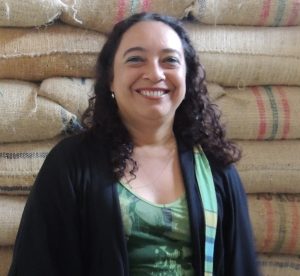 rcia Ruiz, Social Program Coordinator
rcia Ruiz, Social Program Coordinator
Luz Marina (left) manages the social
programs that are funded by Fair Trade premiums. She is an active supporter of the organic movement and organizes countless farmer trainings. Her work also includes managing the co-op’s women’s program, food security program and a project to serve school lunches.
Yaneth Taborda Morales, Coffee Cupper
Yaneth manages the Coffee Collection Center, where the co-op buys the coffee from its farmer members. As manager, she talks to farmers
about their coffee’s quality and sorts and grades their coffee right before their eyes. She is also teaching other farmers to cup and analyze coffee.
Angelica Arroyave Cordoba, Quality Ambassador and Primary Coffee Cupper 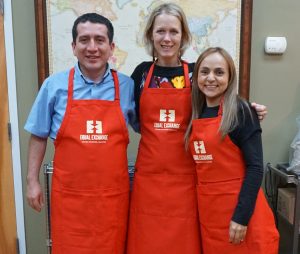
Angelica (far right) is a skilled cupper and is engaged in coffee quality both within and beyond her co-op. She competed in Colombia’s National Cupping Competition in 2015, and won! She went on to finish ninth in the world. Angelica is on a professional path to become a Q Grader Instructor. She apprenticed with Equal Exchange Quality Manager Beth Ann Caspersen in January this year in Piura, Peru.
We’re proud to work with these amazing women through our trade partnership with ASPROCAFE Ingruma. Try Organic Colombian Crescendo, a seasonal light-medium roast with notes of cocoa, raisin and fig!
Last year, we celebrated the 30th birthday of Equal Exchange — and so much more! In this video, Equal Exchange worker-owners share just a few of the moments that made 2016 great. Thank you for your support, and please join us in creating big change in 2017!
Valentine’s Day is just around the corner! You know what that means: sweets for your sweetheart. Celebrate the day by making these easy, delicious chocolate covered strawberries. The best part? We make them with organic, fairly traded chocolate! Show your love for that special someone with a thoughtful alternative to conventional chocolate.
Watch the video above for step-by-step instructions, or follow the recipe below.
What you need:
Strawberries
2 bars of Equal Exchange chocolate (any variety, but we used Organic Very Dark 71%)
What to do:
1. Wash your strawberries without removing the stems.
2. Chop your chocolate.
3. Bring a saucepan of water to a simmer over medium heat.
4. Place your chocolate in a heatproof medium sized bowl and place that over the saucepan.
5. Allow the chocolate to soften and stir until melted.
6. Remove the melted chocolate from the heat. Dip strawberries in the chocolate, then lift and twist slightly to allow excess chocolate to fall back into the bowl.
7. Place the strawberries on a baking sheet lined with parchment paper and allow the chocolate to set for 30 minutes.
8. Serve or refrigerate, then share with your sweetheart.
Happy Valentine’s Day
In July, the “Nuns on the Bus” let loose again, starting in Wisconsin in mid-July, and hitting towns and cities—and congressional offices—in the northeast, on the way to both the Republican and Democratic conventions to challenge public officials and candidates to “Mend the Gaps” in Wealth and Income Inequality.
Network Lobby, the year-round home of the Nuns, is a long-time customer of Equal Exchange, and we proudly donated the coffee, tea and chocolate for the trip.
Peter Buck, from Equal Exchange, spoke at their July 23rd rally in Boston. See a video of his speech from the rally.





